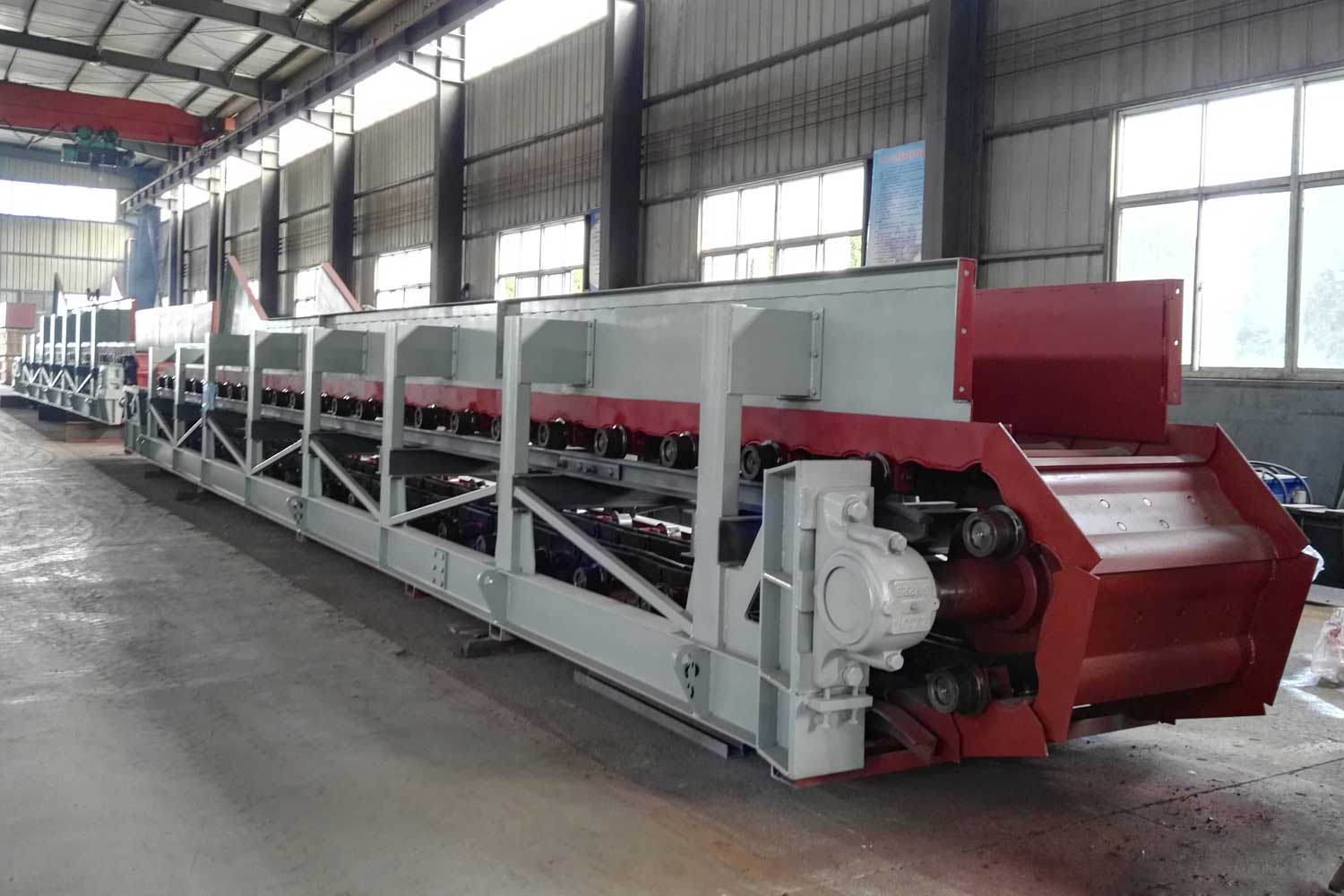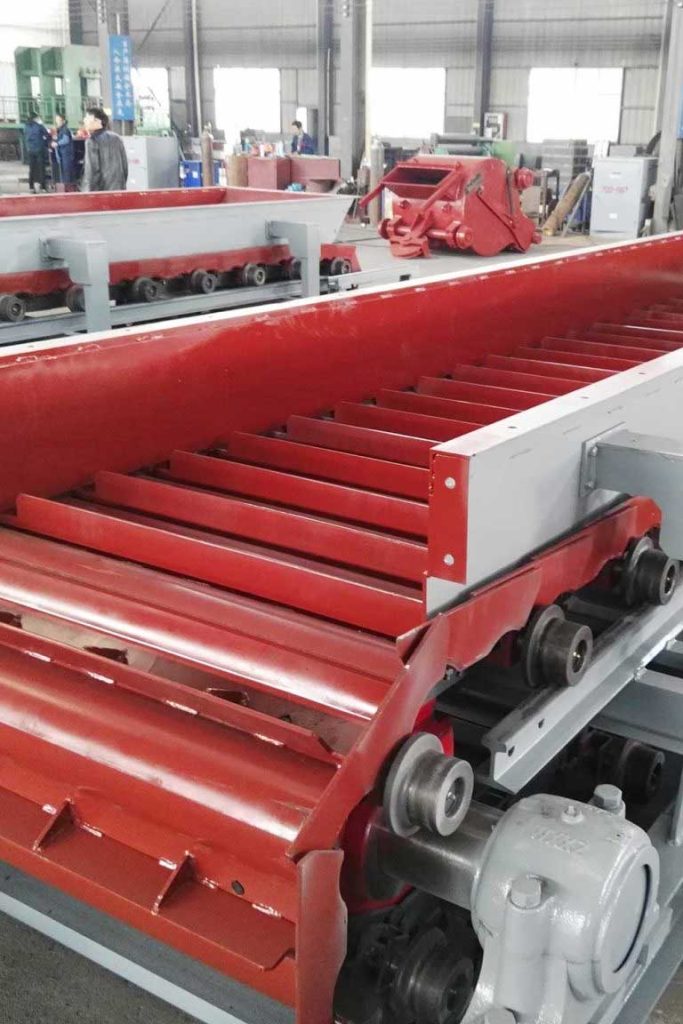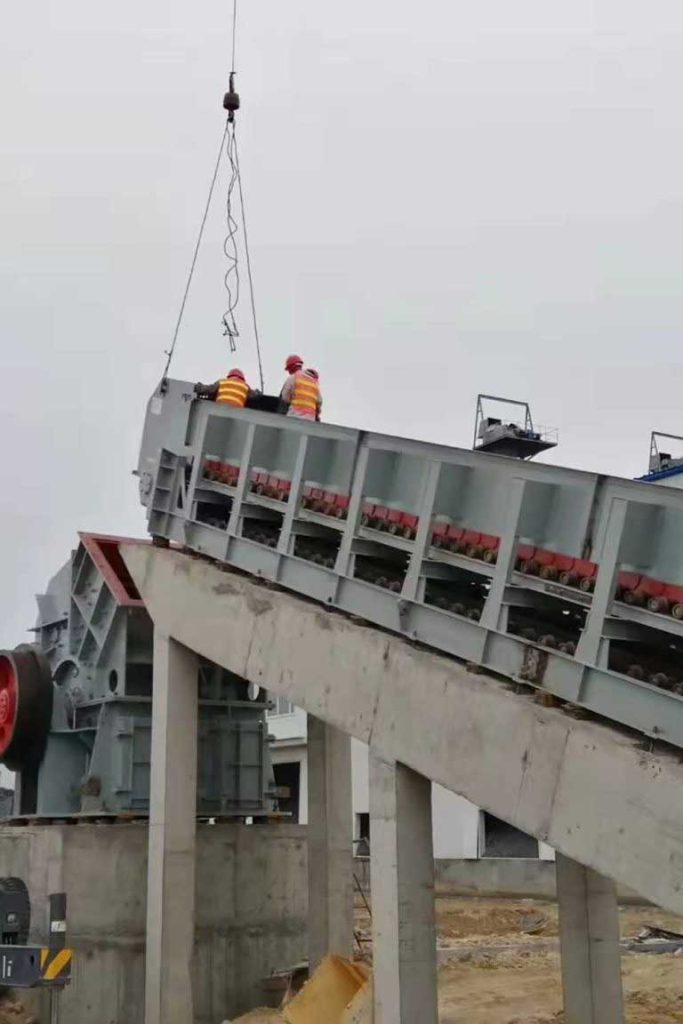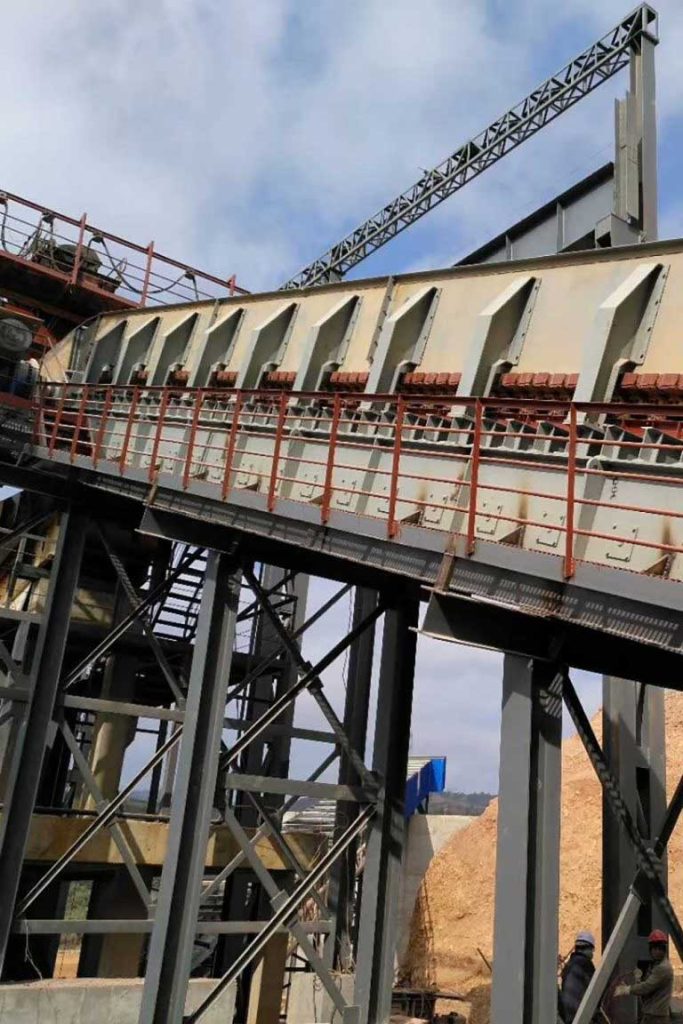Apron Feeders provide the most accurate feed rate of all the feeders. You can change the running speed of the apron feeder by adjusting the eccentric distance and optimal running speed can be obtained by adjustment of the eccentric wheel.
What should I do if the feeding speed of the apron feeder is slow?
The apron feeder equipment can complete the conveying of granular or block materials, and convey them to the receiving equipment at a uniform speed. Therefore, this equipment is relatively common in most factories, and the equipment is in operation. It may also encounter the phenomenon that the feeding speed is too slow. How to solve it at this time?
Three reasons and solutions
- The inclination of the conveying trough: First of all, if the feeding speed of the apron feeder equipment is too slow during use, it may be caused by the insufficient inclination of the conveying trough of the equipment. Therefore, the staff can adjust the conveying trough of the equipment in time The inclination of the equipment can solve the situation that the feeding of the equipment is too slow.
- The angle of the eccentric block of the vibration motor: Secondly, the slow feeding speed of the apron feeder equipment during use may also be caused by the different angles of the eccentric block of the vibration motor of the equipment. Both ends of the vibration motor of the equipment are installed For the eccentric block part, if the included angles of these two parts are different, it must be adjusted in time to solve the problem of the slow feeding speed of the equipment. Read More: Guide to the Best Vibratory Feeder & Grizzly Feeder
- The excitation force of the vibration motor is small: In addition, the feeding speed of the apron feeder equipment is too slow, which may be caused by the small excitation force of the vibration motor of the equipment. At this time, we need to adjust the position of the eccentric block in time. Generally speaking, when the positions of the two eccentric parts of the equipment coincide, the exciting force is relatively large.
Optimal Apron Feed Speed Faster is always better, right?
The answer is negative, because high speeds can cause accelerated wear on Apron Feeders
The common misconception for anything is “faster is better”. In the case of apron feeders, nothing could be further from the truth. Optimal speed comes from finding that balance where efficiency meets transportation speed. They do operate at slower speeds than belt feeders, but for a good reason.
Normally, the optimal speed of an apron feeder is 0.05 – 0.40 m/second (10–80 fpm). If the ores are non-abrasive, the speed can increase to above 0.30 m/second because there will be less wear.
Higher speeds would hurt an operation. If your speed is too high, you run the risk of accelerated wear of components. Energy efficiency decreases due to the increase in energy demand. Another concern to keep in mind when running an apron feeder at high speeds is the increased possibility of fines being generated. There can be a grinding effect between the material and the pans. Not only would the generation of fines create more issues because of possible fugitive dust in the air, but this also creates a more hazardous work environment for employees overall. So, finding an optimal speed is more important for the productivity and operational safety of the plant.



